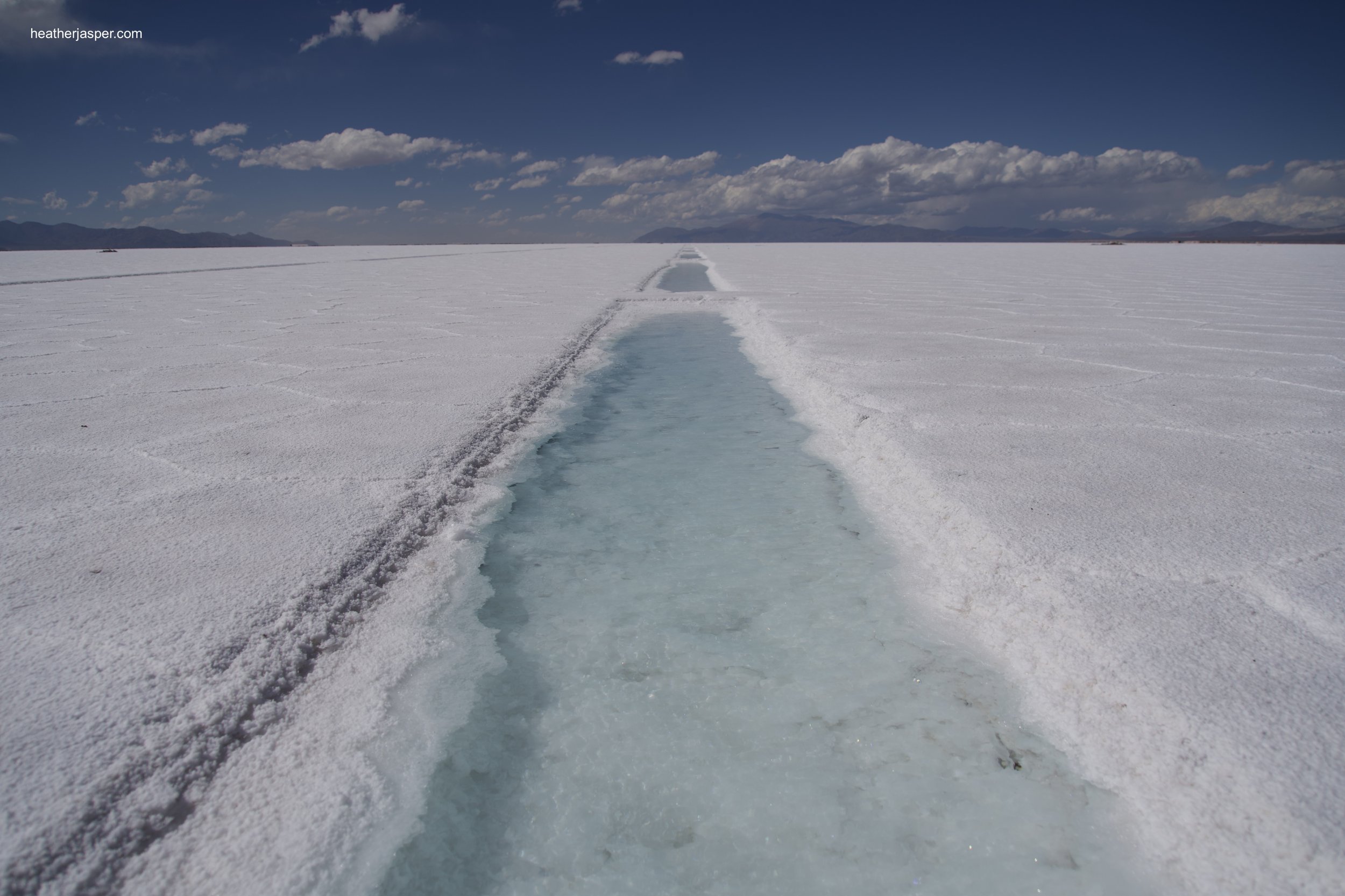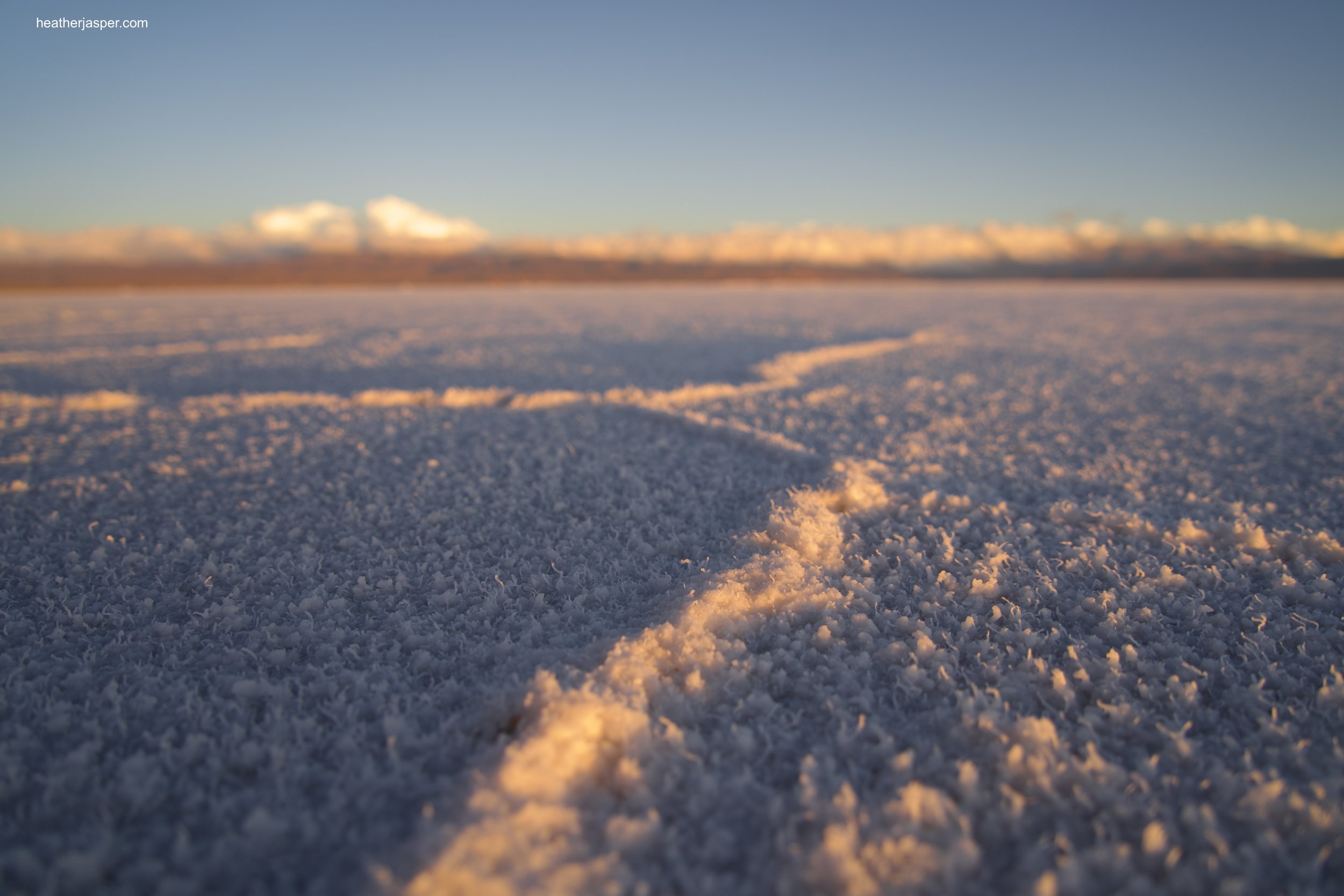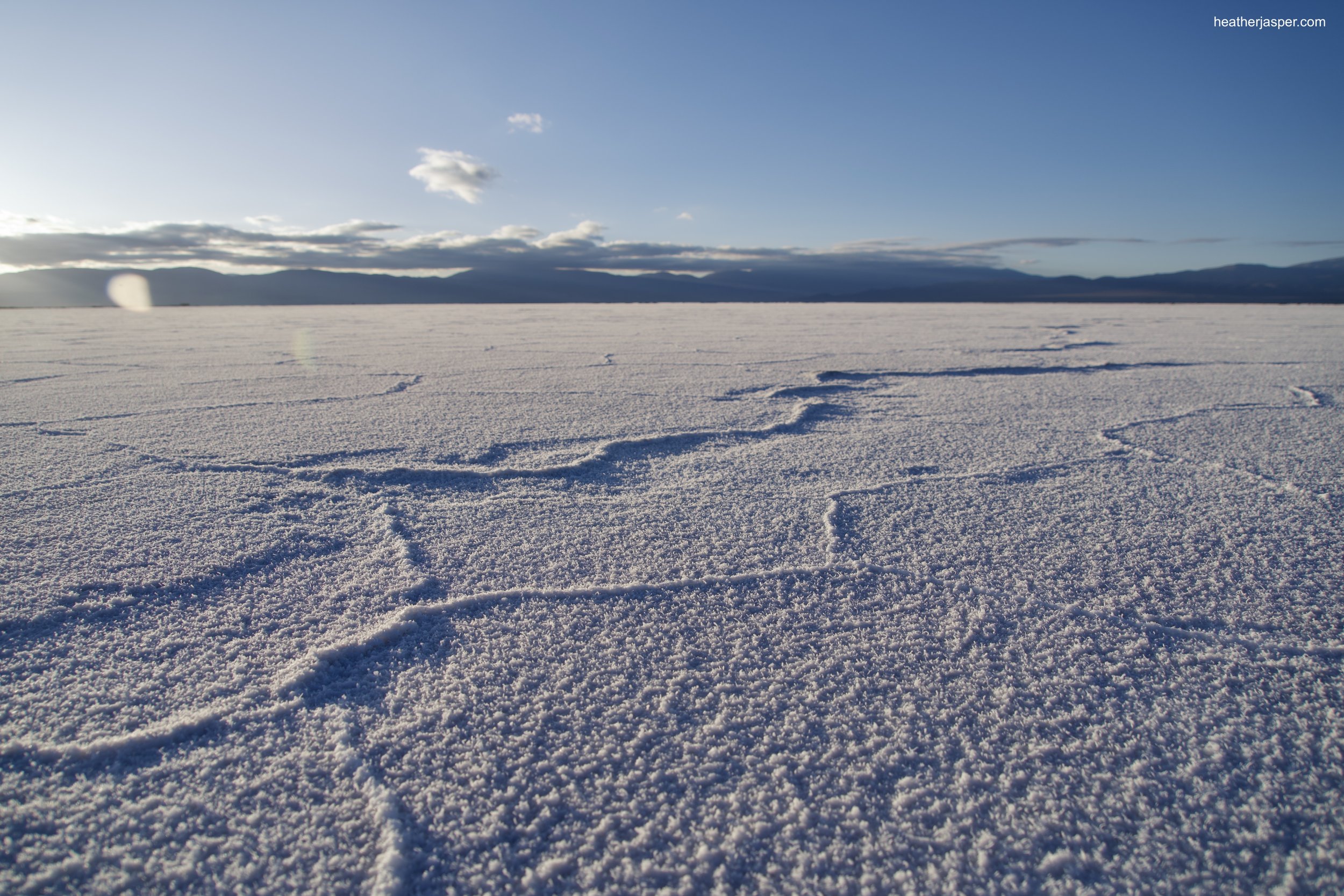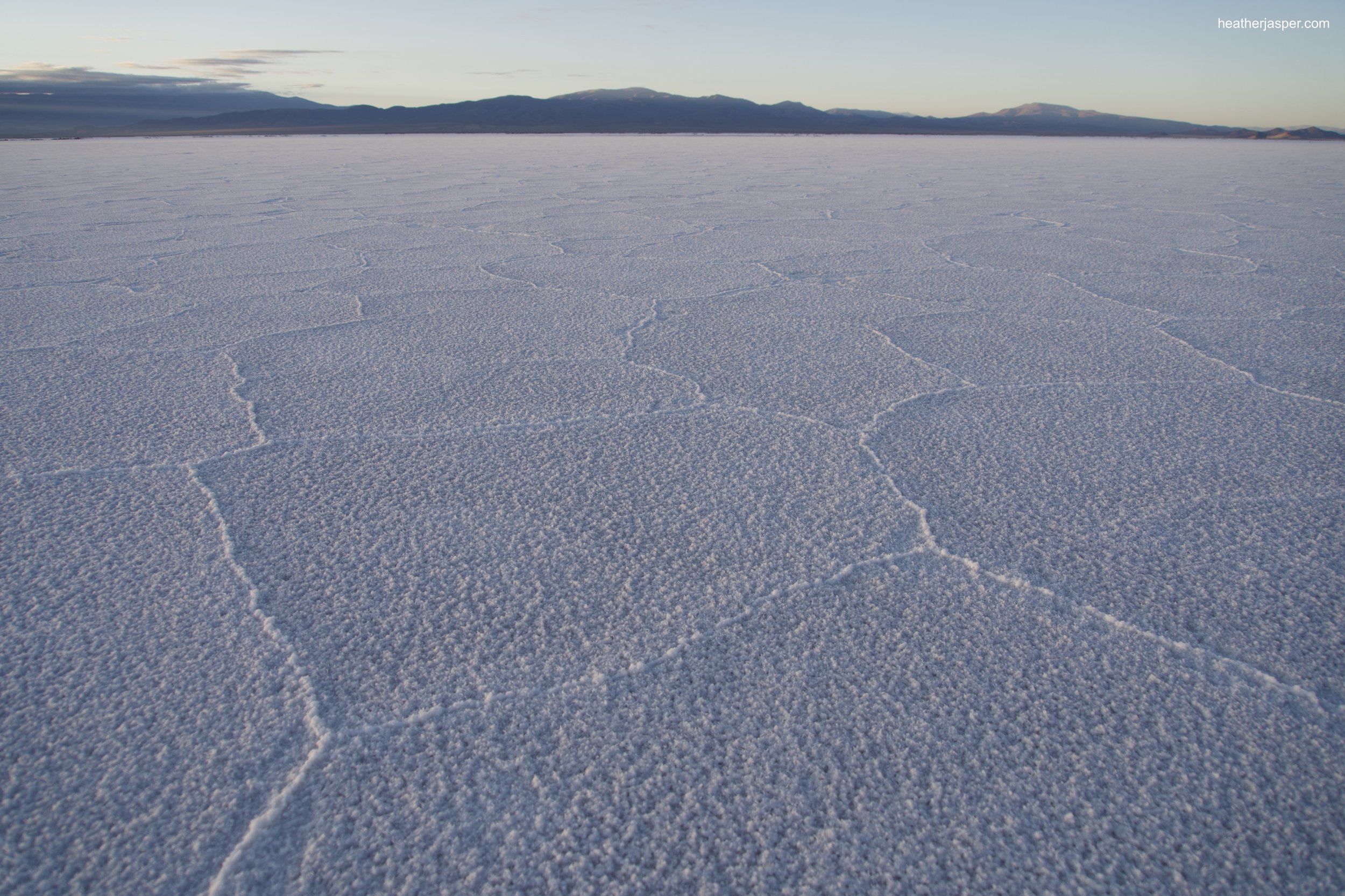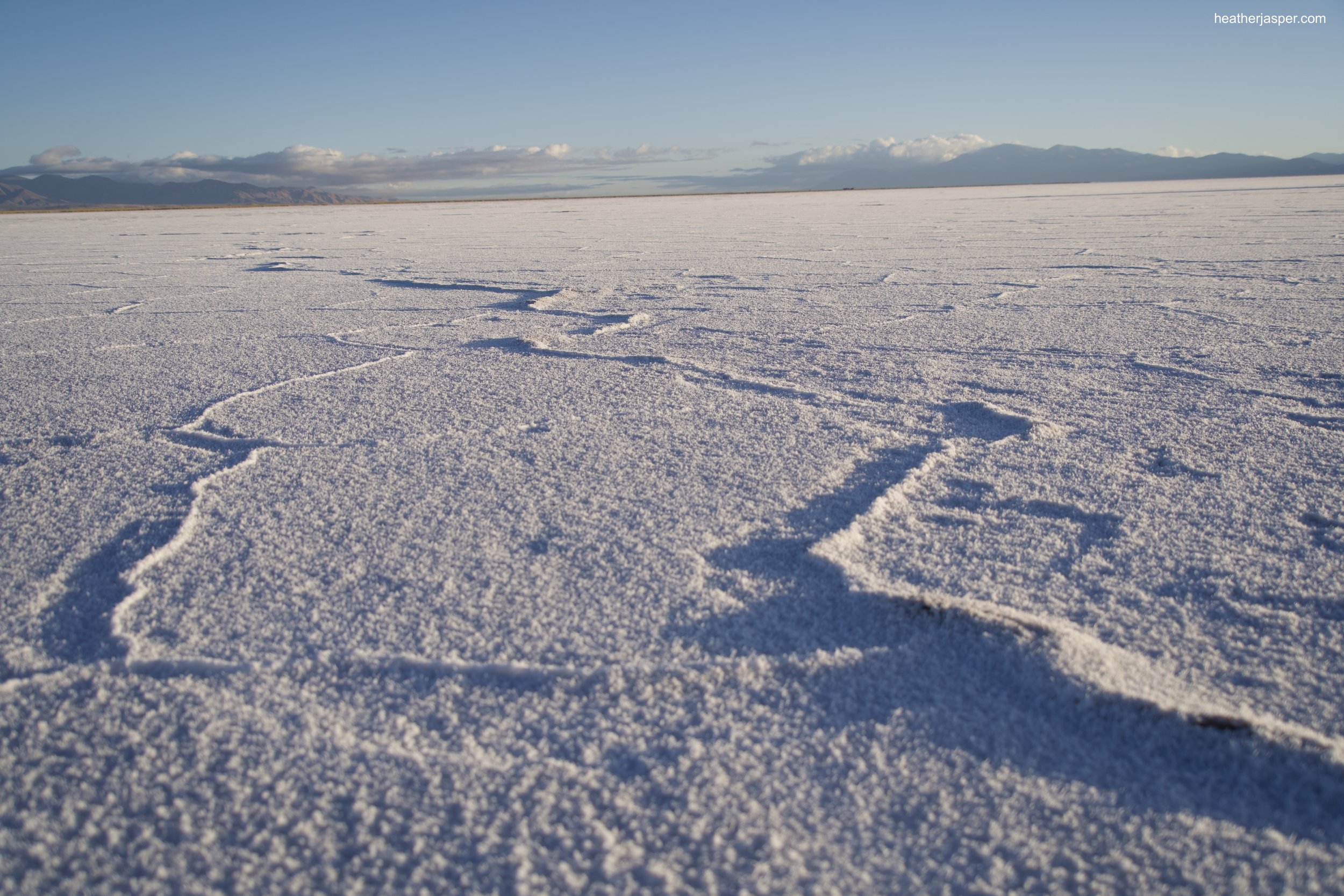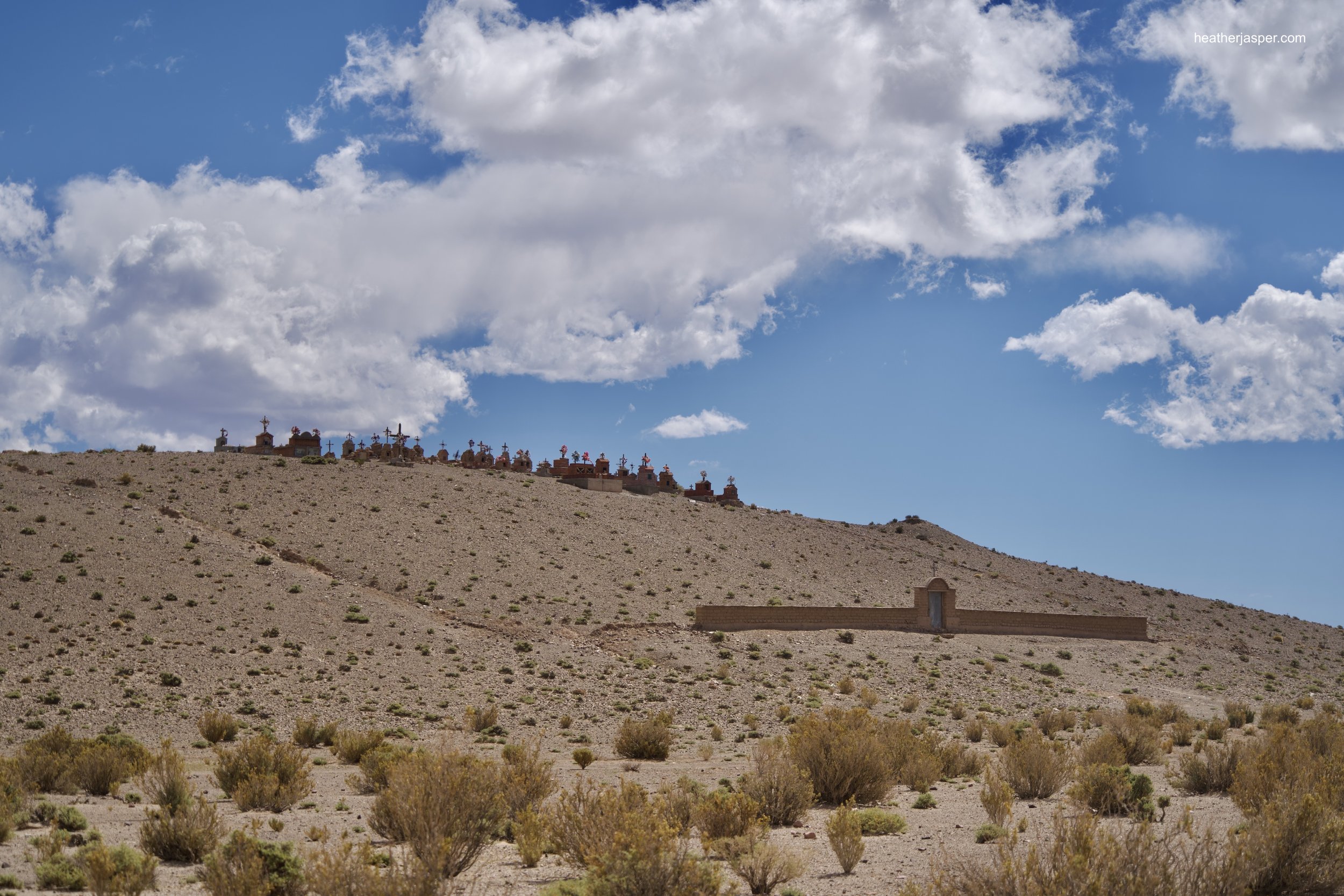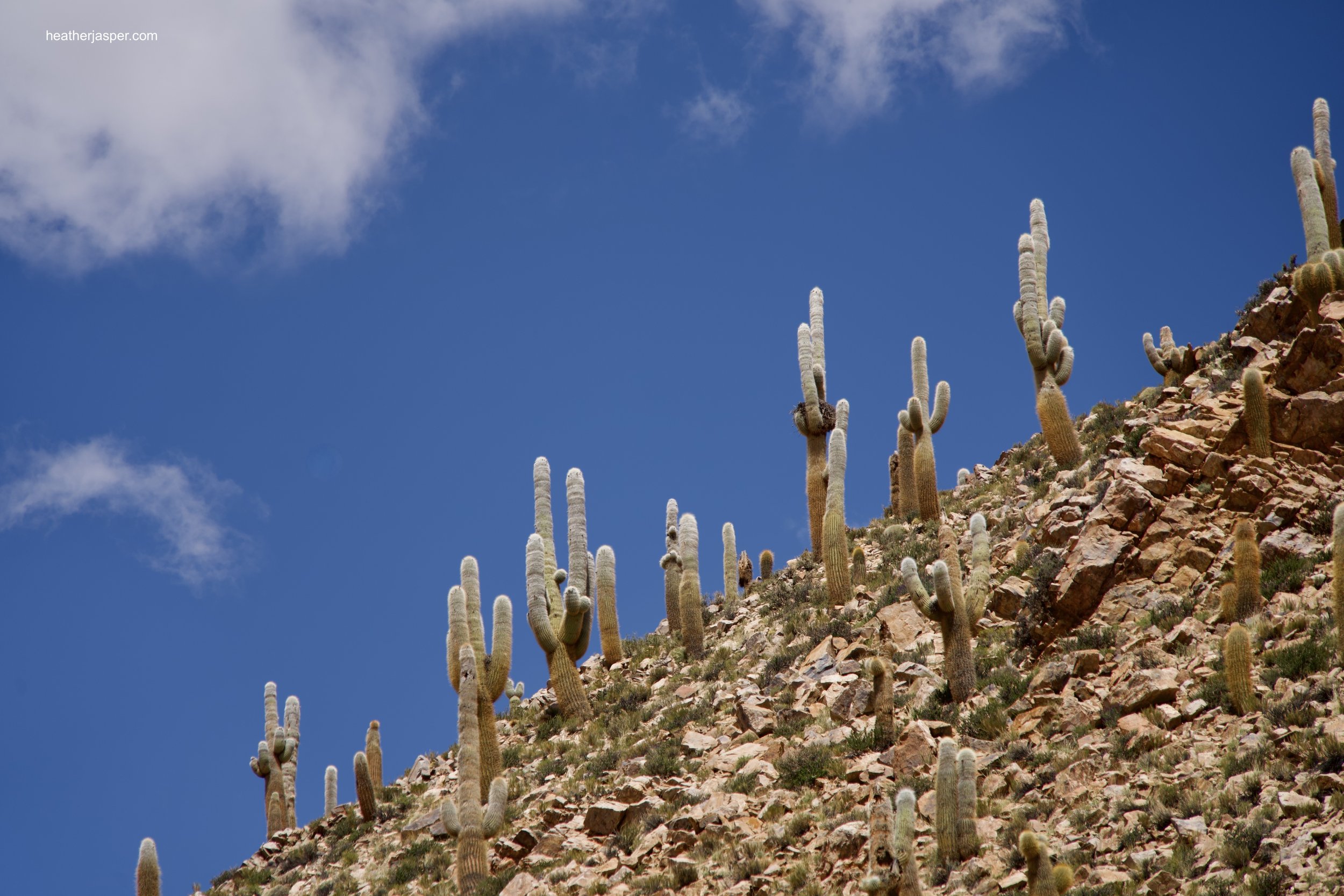Salinas Grandes Argentina
The salt flats are a beautiful part of Argentina and I got to enjoy them from the lap of luxury at Pristine Camps.
Salt flats are not what comes to mind when one thinks of Argentina.
Tango in Buenos Aires, penguins in Patagonia and wine tasting in Mendoza: yes. Giant expanses of sparkling white salt: not so much. (All of the above are covered in my article Top 25 Things to do in Argentina).
I would never have heard of it, were it not for Say Hueque. Their travel agent recommended that I check out Salinas Grandes because of the local Andean culture and the regenerative travel ethos of nearby Pristine Camps. As you can tell by the photo above, I’m very glad I accepted their suggestion.
The people who have lived near Salinas Grandes have harvested the salt to trade for hundreds, if not thousands of years.
They remove the top two or three inches of salt and water wells up to form beautiful turquoise ponds. As the water evaporates, salt crystals form until the surface has completely replaced itself. It seems to be a limitless resource.
There are limits however, to what local people will put up with. While they are working to make Salinas Grandes more of a tourist attraction, they are simultaneously fighting industrial lithium extraction. Their problem with the lithium mines is the vast quantities of water needed to process the lithium, which will both leave them without drinking water and pollute the salt they depend on.
Protesting the lithium mines
Residents of Salinas Grandes are trying hard to fight mining companies that want to mine the salt flats for lithium. Like Ushuaia’s fight against industrial salmon farming, this is a David & Goliath battle by a few citizens against a powerful global industry.
Gathering salt
On one of my trips across the salt flats I stopped to talk with this man, who is harvesting salt much like his ancestors have for hundreds of years. Of course, now people use metal pickaxes and shovels which are a big improvement over stone tools.
The Salinas Grandes salt flats were created by volcanic action about 10 million years ago. Since then, endless cycles of rain and evaporation have left a layer of salt about a foot deep over about fifty square miles. It’s the third largest salt flat in the world, after the nearby Uyuni in Bolivia and Atacama in Chile.
The three countries come together just north of Salinas Grandes and the desert altiplano regions are quite similar in flora and fauna. There are even some similarities with the Peruvian Andes, like vicuña and a special kind of Andean mint called muña.
I was thrilled to see vicuña on my first excursion from Pristine Camps. On our way to Barrancas, we passed a herd of vicuña right next to the salt and the guide obligingly stopped so I could get some photos. (You can read about Barrancas on this blog and about my stay at Pristine Camps on this blog). The next day, on another excursion, we passed several more herds.
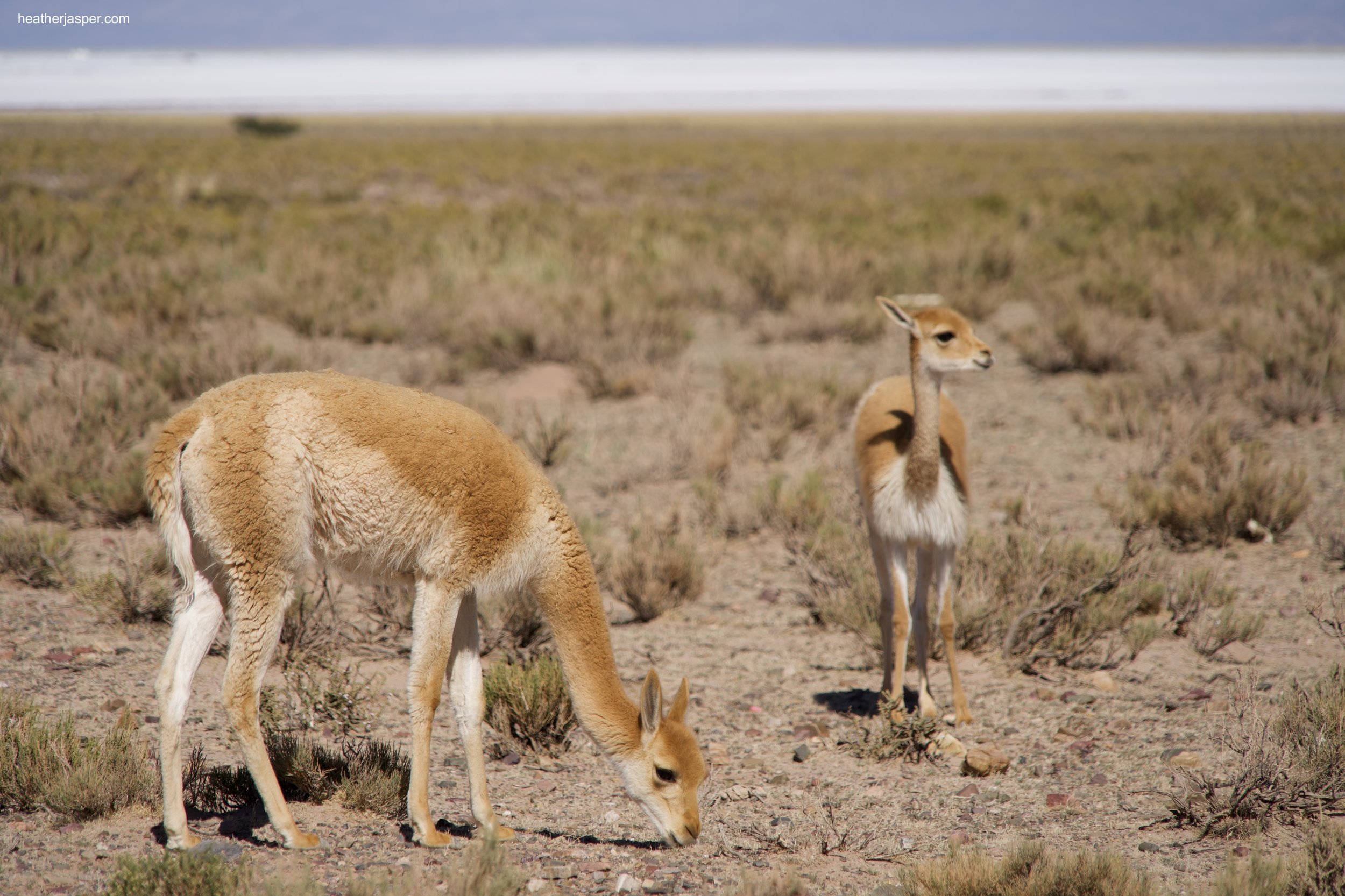
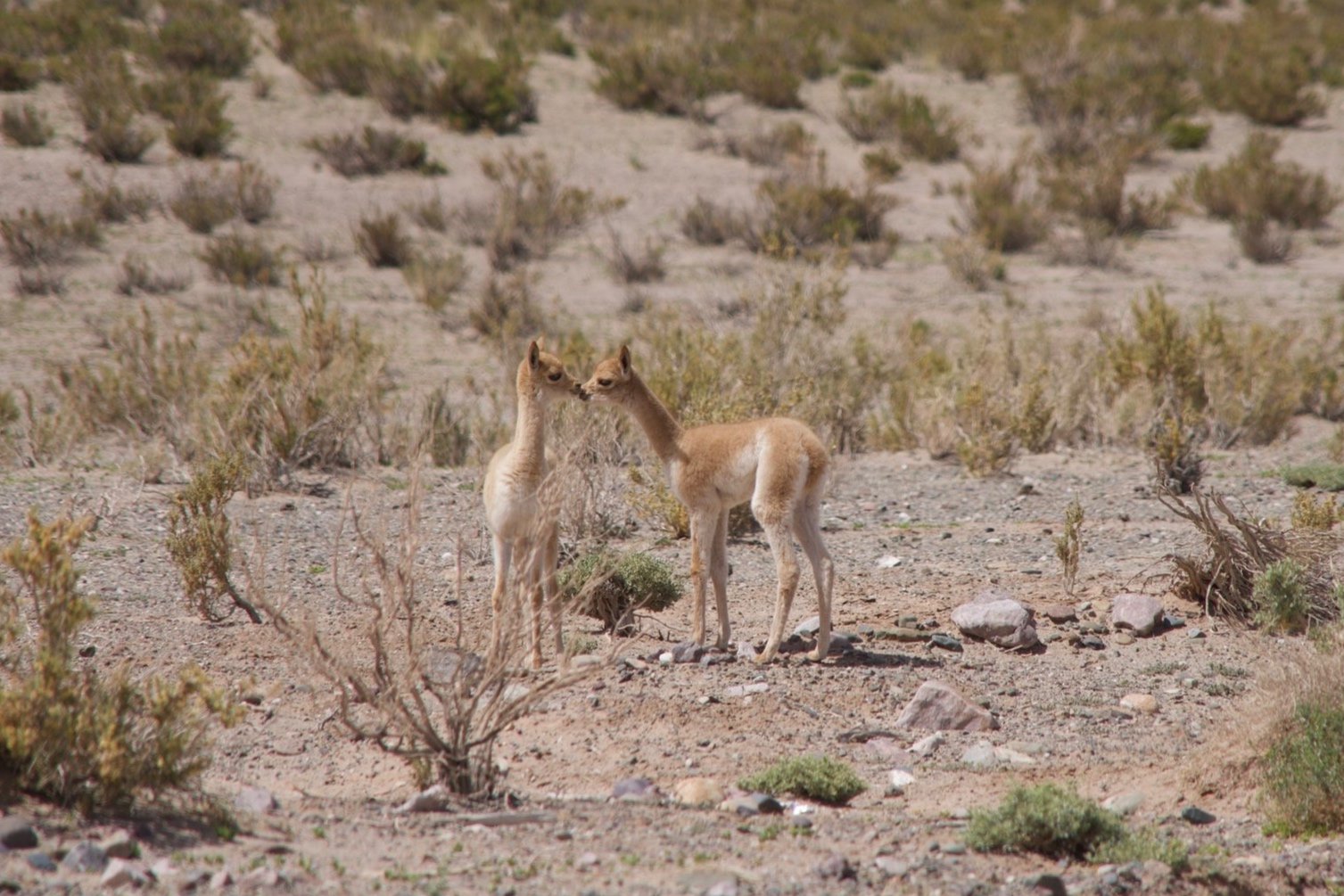

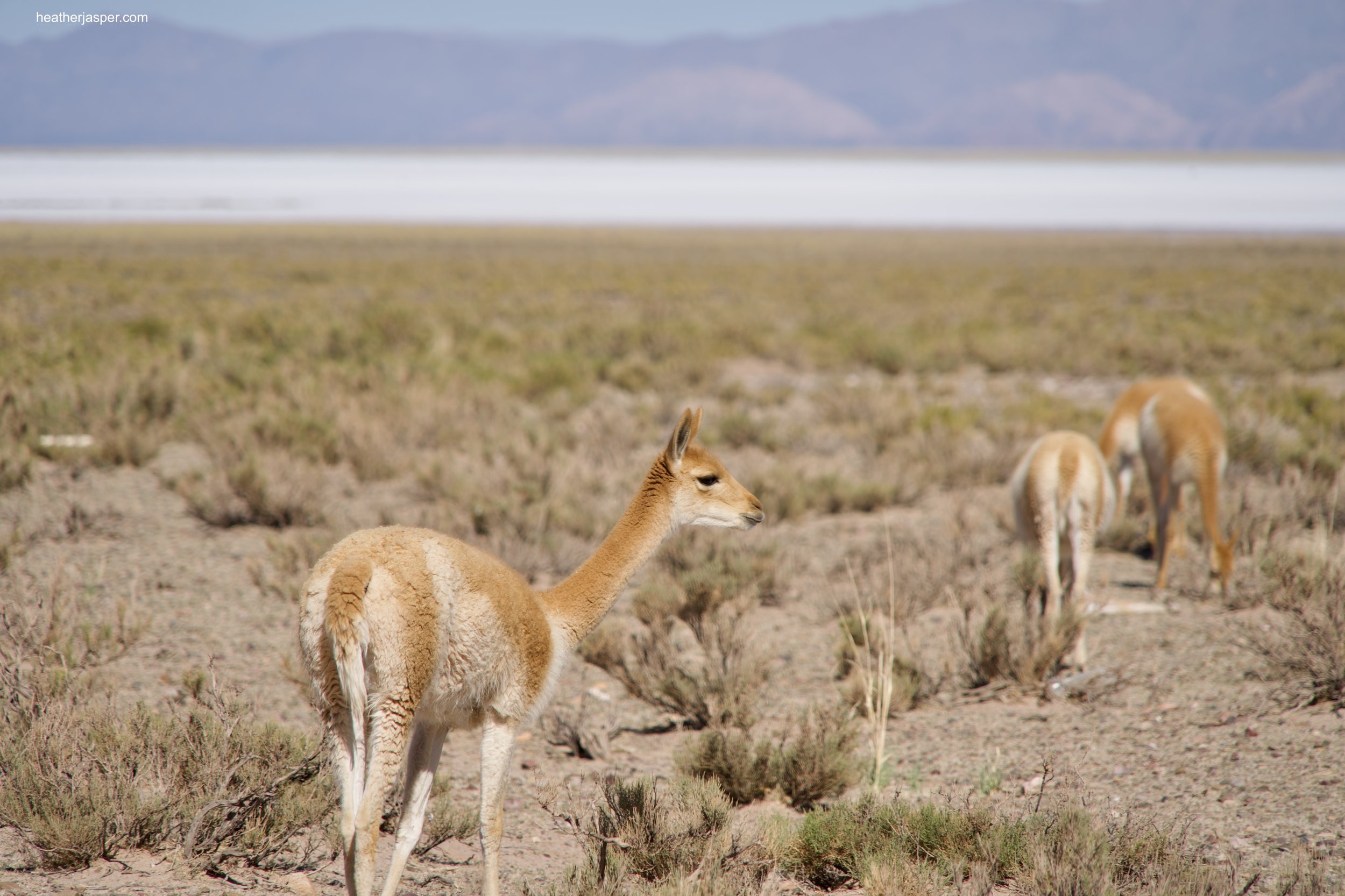
All the vicuña herds had several babies, which was very encouraging. I recently wrote about threats the vicuña populations in Peru are facing for The Long Now Foundation. (You can read the vicuña article here). In short, they are still threatened by hunting as they have been since the Spanish invaded in the 1500s. They are now increasingly threatened by an expanding human population encroaching on their habitat and by climate change. Lithium mining at Salinas Grandes would be disastrous for the vicuña.
And yet, for now, their numbers are still growing. The population throughout the Andes has been rebounding for the past four decades. At Salinas Grandes I learned of an Argentine researcher named Dr. Bibiana Vilá, who has published several scientific papers on vicuña reproduction. So far, I’ve bought one of her books and am still trying to get my hands on more of her work.
There are little spots of green next to the salt flats
They hold tiny villages with a few families who travel to the salt flats to gather salt, but who also herd llamas and farm the land during the rainy season
Salt souvenirs
Near the main road are a few stands where women sell handmade souvenirs. I bought one of these llamas and a set of flavored salts made with herbs and spices. The llama made it home to Cusco intact and I use the salts in my cooking every day.
Living with llamas
This is Trini, one of the local guides I met who live on the edge of Salinas Grandes. She is holding one of the beautiful pillowcases that she made from her llamas’ fur. Trini sold me some very soft llama fur socks that she knit.
I was surprised to learn that people in northern Argentina knit and weave with llama fur. I’m used to the Peruvian way of using alpaca fur for knitting clothes and llama fur for ropes and rugs. Everybody I asked told me that they don’t have alpaca, so they have to do everything with llama fur.


